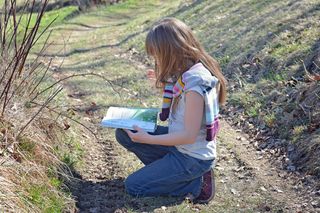Phenomenon-based learning is a teaching method that engages students in learning by grabbing their attention with a real-world “phenomenon” that sparks their curiosity.
Examples of phenomenon-based learning include a class studying decomposition by researching what happens to garbage in their community, or examining hard-to-believe real-world occurrences that can only be explained by science such as the story of a tortoise that crossed the Indian Ocean.
The idea is that these types of real-world stories are complex, wacky, and/or intriguing enough to encourage all students to start asking questions and form deeper connections with the material.
Tricia Shelton, chief learning officer at the National Science Teaching Association, and Mary Lynn Hess, a K-5 STEM resource teacher at Goldsboro Elementary Magnet School in Sanford, Florida, share advice and best practices for incorporating phenomenon-based learning in the classroom.
What is Phenomenon-Based Learning?
Phenomenon-based learning has grown out of Next Generation Science Standards (NGSS), practical research, and real-world connections. “The focus of this new vision for science education is for kids to see see science not as a whole bunch of facts, like knowledge in the abstract, but to see science is something they can use to better understand their world or solve problems, especially in their communities or in the context of their experience,” Shelton says. “We define phenomena as any events in the world that an individual feels like they need to explain, either because they're curious, or because they have a problem they need to solve. We’re positioning phenomena as the driver of what is happening in the classroom.”
Rather than discourage students’ natural curiosity the way traditional science textbooks or tests can, phenomenon-based education engages it.
“There’s no deviation from curiosity when you’re in my classroom,” Hess says. “It's so evident on our campus because kids will come and knock on my door in the middle of the day, [and say] 'Look what I found, look what I found.' They're just so excited and curious about the world and the way it works.”
Phenomenon-Based Learning Advice & Tips
When starting a phenomenon-based lesson, it’s important to provide time to expose students to the phenomenon at the start of the lesson.
“Give kids the opportunity to observe the phenomenon, think about it deeply, but then ask their own questions about it,” Shelton says. “Because questions are really personal to everybody.”
The individual questions students have will also drive their connection and engagement as the instructor guides the exploration of the science behind the phenomenon.
Shelton says instructors should also study phenomenon that make sense for their school communities. For instance, a school near the coast in Florida might be able to engage with marine science in a way that wouldn’t make as much sense for a school in Denver.
It’s also important to remember that not all phenomenon-based learning lessons resonate with students. “Teachers need to be prepared that sometimes they put something in front of kids, and it doesn't work the way it's supposed to,” Shelton says. “That's okay. But they shouldn't try to force that through. They just need to try a different phenomenon at that point. Because that piece of the kids having those personal questions and finding it relevant is a must-have.”
To limit the likelihood of a phenomenon not resonating, Shelton advises using pre-tested phenomena from other teachers. The National Science Teaching Association has a number of phenomenon-based learning resources including its Daily Do science lessons. The NGSS also has a number of resources dedicated to phenomenon-based learning.
To make sure the phenomenon she uses resonates with her students, Hess builds her lessons on their passions. “Find out what interests your students and go from there,” she says. “I find a lot of kids are interested in life science, or they'll find something outside. We have this invasive plant that's around our campus, and every year we do a collection of [the plant]. And they'll come to my back door with just handfuls of them and big smiles. I can tell that they are fully committed to helping the environment.”

